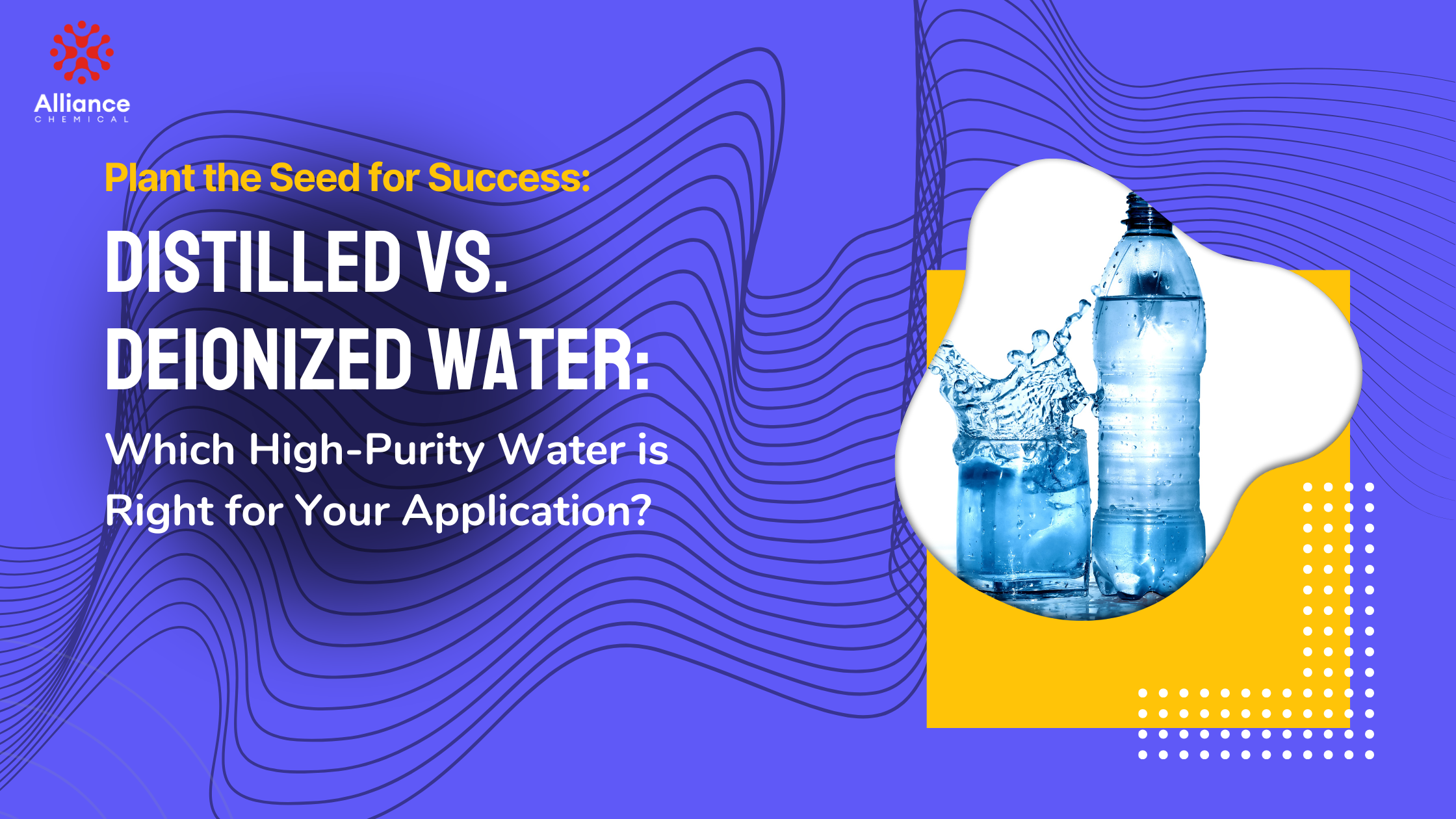
Nitric Acid Chemical Properties: Understanding Its Unique Characteristics
Table of Contents
Summary
Nitric Acid is one of the most important and powerful mineral acids in modern chemistry and industry. Historically known as "aqua fortis" (strong water), its unique ability to act as both a strong acid and a potent oxidizing agent makes it an indispensable tool for applications ranging from fertilizer production to precious metal refining and rocket propulsion. This definitive guide provides a technical exploration of its properties, applications, and critical safety considerations, equipping professionals with the knowledge to utilize it effectively.
The Chemistry of a Dual-Threat Acid
Nitric Acid (HNO₃) is a highly corrosive mineral acid. In its pure, anhydrous form, it is a colorless liquid, but it is almost always used as an aqueous solution. Over time, exposure to light causes it to decompose into water, nitrogen dioxide, and oxygen, which gives older solutions a characteristic yellowish-brown tint.
What truly sets Nitric Acid apart from other strong acids like Hydrochloric Acid is its powerful oxidizing nature. The nitrate ion (NO₃⁻) is a strong oxidizing agent, meaning it readily accepts electrons from other substances. This allows Nitric Acid to react with and dissolve metals that are non-reactive to other acids, such as copper and silver.
A Key Distinction: Acidity vs. Oxidizing Power. While both HCl and HNO₃ are strong acids (they fully dissociate in water), only HNO₃ is a strong oxidizing agent. This is why HCl will not dissolve copper, but HNO₃ will, by oxidizing the copper metal (Cu) to copper ions (Cu²⁺).
Industrial Production: The Ostwald Process
The vast majority of the world's Nitric Acid is produced via the Ostwald process, a highly efficient three-step method developed by Wilhelm Ostwald in the early 20th century.
- Catalytic Oxidation of Ammonia: Ammonia (NH₃) gas is mixed with air and passed over a platinum-rhodium catalyst gauze at high temperatures (around 850°C). This oxidizes the ammonia into nitric oxide (NO).
- Oxidation of Nitric Oxide: The nitric oxide gas is then cooled and further oxidized with excess air to form nitrogen dioxide (NO₂).
- Absorption in Water: Finally, the nitrogen dioxide gas is passed through absorption towers where it reacts with water to form a solution of Nitric Acid. The concentration is then adjusted to meet commercial grades, typically ranging from a general-purpose 40% to the common industrial standard of 65-70%.
The Cornerstone Applications of Nitric Acid
Nitric Acid's dual chemical nature makes it essential across a wide spectrum of major industries.
1. Agriculture: The Foundation of Modern Fertilizers
By far the largest global use of Nitric Acid (approximately 80%) is in the production of nitrogen-based fertilizers. It is reacted with ammonia to produce Ammonium Nitrate (NH₄NO₃), an excellent solid fertilizer that provides plants with nitrogen in two forms (ammonium and nitrate). This single compound has been a pillar of the Green Revolution, dramatically increasing crop yields worldwide.
2. Metallurgy: Refining, Passivating, and Etching
Nitric Acid's ability to dissolve metals makes it a key player in metallurgy:
- Precious Metal Refining: It is used to separate gold from other metals. While it cannot dissolve gold itself, it readily dissolves silver and base metals, leaving the pure gold behind. A mixture of Nitric and Hydrochloric Acid, known as aqua regia, is required to dissolve gold.
- Passivation of Stainless Steel: After welding or machining, stainless steel is treated with Nitric Acid to remove free iron from the surface and enhance the formation of a passive, corrosion-resistant chromium oxide layer.
- Metal Etching: Used in electronics to etch patterns onto copper-clad circuit boards and in artistic printmaking.
3. Chemical Synthesis and Nitration Reactions
Nitric Acid is a fundamental reagent for introducing a nitro group (-NO₂) onto an organic molecule, a process called nitration. This is the foundational step for producing a vast range of important chemicals:
- Explosives: Production of nitroglycerin, trinitrotoluene (TNT), and RDX.
- Polymers: Synthesis of adipic acid, a key precursor to Nylon 6,6.
- Polyurethanes: Used to produce toluene diisocyanate (TDI), a primary component of polyurethane foams.
4. Rocketry and Aerospace
In its most concentrated form, known as red fuming nitric acid (RFNA), it serves as a powerful, hypergolic liquid rocket propellant oxidizer. When mixed with a fuel like hydrazine, it ignites on contact, eliminating the need for a complex ignition system.
Buyer's Guide: Choosing the Right Nitric Acid Concentration
Selecting the correct concentration is crucial for efficacy, safety, and cost. Use this table to guide your decision.
| Concentration | Grade | Primary Applications | Ideal User |
|---|---|---|---|
| ~70% | ACS Grade | High-purity laboratory analysis (e.g., trace metal analysis), reagent preparation, electronics-grade etching. | Research Labs, QA/QC Depts, Electronics Fabricators. |
| ~65% | Technical | Large-scale chemical synthesis, fertilizer production, industrial metal treatment. | Chemical Manufacturers, Agricultural Producers. |
| ~40% | Technical | General metal cleaning, pickling baths where lower reactivity is desired, pH adjustment. | Metal Finishing Shops, Industrial Maintenance. |
| 5-25% | Technical | Dilute cleaning solutions, certain passivation processes, specific laboratory procedures requiring a milder acid. | Custom applications, labs requiring dilute standards. |
Technical Comparison: Nitric Acid vs. Other Mineral Acids
| Attribute | Nitric Acid (HNO₃) | Sulfuric Acid (H₂SO₄) | Hydrochloric Acid (HCl) |
|---|---|---|---|
| Primary Function | Strong Oxidizing Agent | Strong Dehydrating Agent | Strong, Non-Oxidizing Acid |
| Volatility | High (Fuming) | Very Low | Very High (Fuming) |
| Reactivity w/ Copper | Yes (Dissolves it) | Only when hot & concentrated | No Reaction |
| Key Industrial Use | Fertilizers (Ammonium Nitrate) | Fertilizers (Phosphates) | Steel Pickling |
MANDATORY Safety Protocols for Handling Nitric Acid
Nitric Acid is an extremely hazardous and highly corrosive chemical. Its fumes are toxic and it can cause severe chemical burns and react violently with other materials. It must be handled with the highest level of care.
- Respiratory Protection is Essential: The fumes from Nitric Acid (nitrogen oxides) are toxic. A NIOSH-approved respirator with an acid gas (AG) cartridge is mandatory when working with open containers or in case of a spill.
- Full Personal Protective Equipment (PPE): Always wear heavy-duty chemical-resistant gloves (neoprene or nitrile), splash-proof safety goggles, and a full-face shield. An acid-resistant apron or suit is required.
- Ventilation is Critical: ALWAYS work in a well-ventilated area, preferably inside a chemical fume hood designed for acid use.
- Storage: Store in a cool, dark, well-ventilated area in a dedicated, acid-resistant cabinet. It is light-sensitive. Keep it isolated from organic materials (wood, paper, solvents), cyanides, and bases.
- Violent Reactions: Never mix Nitric Acid with alcohols, acetone, or other organic solvents as this can lead to a violent, explosive reaction.









